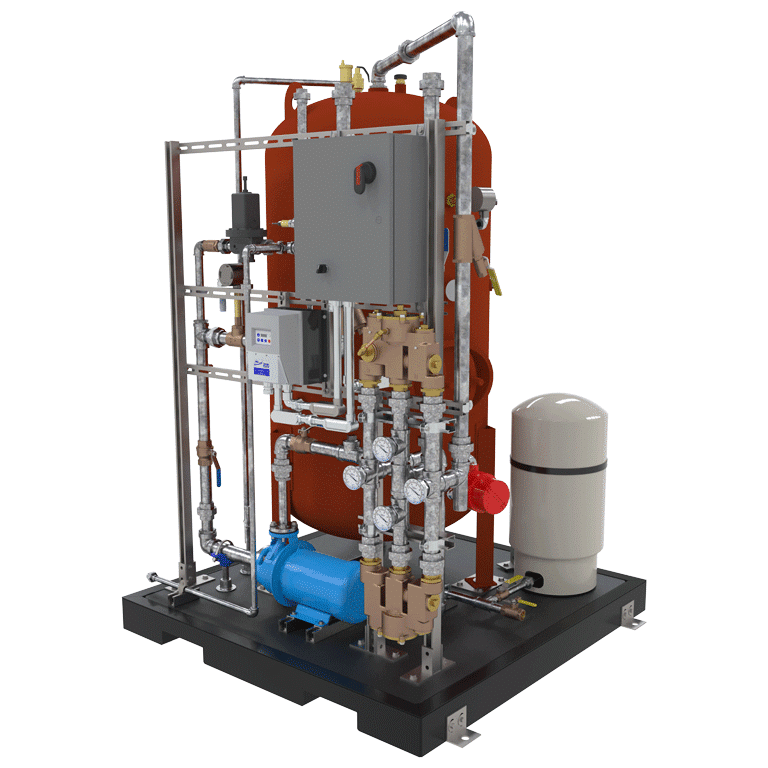Water that is too cold or too hot can cause:
Hypothermia (cold water)
Burns or discomfort (hot water)
Reduced flushing time due to discomfort
Tepid water ensures the user can flush for the full 15 minutes without risk.
Products ({{totalProducts}})
No Products matched search term
Below are some frequently asked questions regarding the ANSI Z358.1-2014 requirement of providing tepid water for emergency showers & eyewashes. Tepid water is defined as flushing fluid between 60°F- 100°F (16°C- 38°C).

Water that is too cold or too hot can cause:
Hypothermia (cold water)
Burns or discomfort (hot water)
Reduced flushing time due to discomfort
Tepid water ensures the user can flush for the full 15 minutes without risk.
Non-compliance may lead to:
Increased injury severity
OSHA citations or fines
Legal liability if employees are harmed
Yes and no. Theoretically you could fill a tank without an immersion heater and allow it to reach equilibrium with the ambient environment (70°F [21°C]), and provide tepid water. The issue is that you will need more water than 300 gallons to provide 15 minutes of tepid water because you will have to account for the shower (20 GPM), eyewash (.4 GPM), and eye/face wash (3 GPM). Remember these are minimum flow rates based on Z358.1-2014 and total GPM requirements will vary depending on manufacturer. Based on these, you will require as a minimum 315 gal at a minimum assuming 100% usage for a shower/eyewash or 345 gal minimum assuming 100% for a shower and eye/face wash combination. If this is a self-contained unit, you could do this but would have to add a bacteriostatic solution, have at a minimum a 400 gal tank, and some means for delivering the water (air cylinders or pump). Haws Integrated can provide a plug and play system of this type.
The other thing to consider is that you are now holding water at a temperature that is much more prone to bacterial growth. When Haws Integrated designs a tepid water system, we will hold the water at a minimum of 145°F (62.8°C), but more typically at 165°F (73.9°C), which prevents the growth of bacteria. Also critical to eliminating bacterial growth is the flushing of the showers and piping on a weekly basis. Without a heater, the recovery time could be significant.
If you have cold water plumbing and adequate pressure, then I would recommend that you use a hot water tank system along with a mixing valve to get tepid water for a potable water system.
The cool water comes from the potable water supply, and is assumed to be below 60°F (16°C). The water will be combined with the hot water in the storage tank to produce tepid water for emergency showers & eyewashes.
Legionella growth range is between 68°F - 122°F (20-50°C). Most potable water coming into a tepid water system is below 60°F (16°C). On the hot water side the water is held at 165°F (73.9°C) or above, therefore lowering the possibility of Legionella growth. There is no mixing valve on the market designed for safety showers that can pass water at 165°F (73.9°C) for shock purposes. This is a dangerous scenario for safety equipment. A process would need to be implemented to ensure the safety equipment could not be used until the piping temperature was reduced to below 100°F (38°C).
No, there is no change in the tepid water requirement. However, the 2009 and 2014 standards moved the tepid water ranges of 60°F to 100°F (16°C- 38°C) from the appendix to the main section of the standard. We recommend that the temperature be in the middle of the range for user comfort and promoting 15 minutes of usage.
Mixing Valves | Tempering Skids | Instantaneous Water Heaters
Explore our Tempered Water Solutions
Learn More
Your opinion helps us improve. Complete our quick Customer Engagement Survey today for your chance to win.